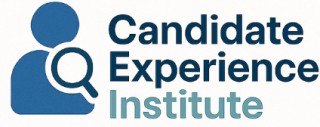
Understanding Direct Care Health Plan Solutions
Decoding the Mechanics of Direct Care Health Plan Solutions
Direct care health plan solutions, often known as Direct Primary Care (DPC) or Care Direct models, represent a shift in the traditional healthcare system. These plans prioritize direct relationships between patients and healthcare providers, bypassing the conventional health insurance framework. Employing a more cost-effective and transparent approach, direct care solutions are drawing attention from both employees and employers alike. In this model, patients often pay a membership fee, which tends to cover a range of primary care services. This arrangement allows for more focused preventive care and quality care, reducing overall care costs while enhancing health outcomes. Employees benefit from having primary care providers who are more accessible and dedicated, addressing healthcare needs promptly and efficiently. For employers, these direct care solutions serve as a strategic advantage. By offering care plans that are tailored to specific employee needs, businesses can not only cut costs but also enhance employee satisfaction and retention. Healthcare transparency, reduced medical service costs, and streamlined services make direct care plans a compelling option. Understanding how direct care models integrate with current healthcare offerings is crucial for employers seeking innovative ways to provide comprehensive health benefits. To delve deeper into these concepts, exploring the intricacies of backfill positions may provide additional insights into optimizing staffing and benefit strategies.The Impact of Health Benefits on Candidate Experience
The Role of Health Benefits in Shaping Candidate Perception
In today's competitive job market, the quality of health benefits offered by employers plays a crucial role in shaping the overall candidate experience. Candidates often evaluate potential employers based on the comprehensiveness and accessibility of their health care services. A robust health plan can significantly influence a candidate's decision to join or stay with a company.
Health benefits are not just about providing basic medical coverage. They encompass a range of services, including preventive care, direct primary care (DPC), and health sharing options. These elements contribute to a more holistic approach to employee well-being, which can enhance job satisfaction and retention rates.
Why Health Benefits Matter to Candidates
- Quality Care: Candidates are increasingly looking for employers who offer quality care services. This includes access to primary care physicians and preventive care measures that can help maintain their health and well-being.
- Cost-Effective Plans: With rising healthcare costs, candidates are drawn to employers who provide cost-effective health plans. These plans not only reduce out-of-pocket expenses but also offer peace of mind regarding future medical needs.
- Comprehensive Coverage: A health plan that covers a wide range of services, from routine check-ups to specialized care, is highly attractive to potential employees. Comprehensive coverage ensures that employees feel secure and valued.
- Direct Care Options: Direct care and DPC membership options are becoming popular as they offer more personalized and accessible healthcare solutions. These options can enhance the candidate experience by providing more direct and immediate access to healthcare providers.
For employers, understanding the impact of health benefits on candidate experience is essential. By tailoring health plans to meet the specific needs of employees, companies can not only attract top talent but also foster a more engaged and loyal workforce. To delve deeper into how health benefits can influence candidate decisions, consider exploring the concept of a backfill position and its implications for staffing and retention strategies.
Tailoring Health Plans to Meet Employee Needs
Customizing Health Plans for Optimal Employee Satisfaction
In today's competitive job market, employers are increasingly recognizing the importance of tailoring health plans to meet the diverse needs of their employees. Offering a one-size-fits-all health insurance plan is no longer sufficient to attract and retain top talent. Instead, organizations are turning to direct care solutions, such as Direct Primary Care (DPC) memberships, to provide more personalized and comprehensive care services.
Direct care models emphasize preventive care and quality care, allowing employees to access primary care services without the traditional barriers of insurance. This approach not only enhances the employee experience but also improves health outcomes by fostering a proactive approach to healthcare. By offering DPC memberships, employers can provide their workforce with direct access to primary care physicians, reducing care costs and improving overall satisfaction.
Moreover, tailoring health plans to include options like health sharing and employer-sponsored care services can further enhance the benefits package. These options allow employees to choose plans that best fit their medical needs and financial situations, leading to increased engagement and loyalty. As a result, employers can see a positive impact on their recruitment and retention efforts, as well as a reduction in healthcare-related costs.
For organizations looking to implement these innovative solutions, understanding the impact of health benefits on the candidate experience is crucial. By aligning health plans with employee needs, companies can create a supportive and attractive work environment that stands out in the job market.
Cost-Effective Solutions for Employers
Cost-Effective Strategies for Employers
Employers are constantly seeking ways to provide comprehensive health benefits while managing costs effectively. Direct Care Health Plan Solutions offer a promising approach by focusing on primary care and preventive services. These plans can significantly reduce the financial burden on both employers and employees, making them an attractive option for organizations of all sizes.
One of the key advantages of Direct Primary Care (DPC) membership is its potential to lower overall healthcare costs. By prioritizing preventive care and establishing strong patient-provider relationships, DPC can help reduce the need for expensive medical interventions. This not only benefits employees by improving their health outcomes but also helps employers control care costs.
Moreover, DPC plans often eliminate the need for traditional health insurance for primary care services, which can lead to significant savings. Employers can offer DPC memberships as part of their health benefits package, providing employees with access to quality care without the high costs associated with traditional health insurance plans.
Another cost-effective strategy is the implementation of health sharing programs. These programs allow employees to share healthcare expenses, reducing the financial burden on both the employer and the employee. Health sharing can be a valuable addition to an employer-sponsored health plan, offering flexibility and cost savings.
Employers should also consider tailoring their health plans to meet the specific needs of their workforce. By understanding the unique requirements of their employees, employers can design plans that provide the most value. This approach not only enhances employee satisfaction but also contributes to a positive candidate experience, as discussed in the impact of health benefits on candidate experience.
In conclusion, by leveraging Direct Care Health Plan Solutions and exploring innovative cost-saving strategies, employers can offer comprehensive health benefits that are both effective and affordable. This not only supports employee well-being but also strengthens the overall candidate experience.
Implementing Direct Care Health Plans in Your Organization
Implementing Practical Steps for Direct Care Integration
Implementing direct care health plans within an organization can transform how employers provide healthcare benefits, enhancing overall employee satisfaction and aligning with financial goals. Here’s how to effectively incorporate them into your benefits package:- Identify Employee Needs: The first step is to evaluate your employees' primary care needs and medical preferences. Understanding these can help employers make informed decisions when selecting a direct primary care (DPC) plan or a direct care insurance model that delivers quality care tailored to employees.
- Evaluate Direct Care Providers: Assess available direct care providers and their services. Whether your organization opts for a DPC membership or integrates preventive care strategies, choose a provider that offers comprehensive care services, ensuring excellent health outcomes for patients.
- Financial Planning: Consider the costs associated with direct employer-sponsored health plans, ensuring they align with your company's budget while offering competitive employee benefits. Direct care often provides cost-effective solutions, potentially reducing overall healthcare costs and increasing preventative health care uptake.
- Educate Employees: Once a plan is selected, communicate the benefits to your staff. Engage them in understanding the nuances of direct primary care versus traditional health insurance, emphasizing how these plans provide immediate access to primary care physicians, reduced care costs, and better care membership benefits.
- Monitor and Measure Success: Post-implementation, employers must track the effectiveness of the adopted plan. Monitoring care costs and employee satisfaction can highlight areas for improvement, ensuring the chosen health plans continue to meet both employee needs and organizational goals.
Measuring the Success of Health Plan Solutions
Evaluating Success Through Measurable Outcomes
Assessing the effectiveness of direct care health plans is crucial in determining their impact on both employers and their employees. A comprehensive evaluation focuses on various elements that indicate success, factoring in improvements in health outcomes, cost savings, and employee satisfaction with their health benefits.- Health Outcomes: Evaluating the quality of healthcare and preventive care received by employees is key. Employers should monitor metrics such as reduced occurrence of severe medical conditions, high engagement rates in wellness programs, and regular check-ups in primary care. Improved health outcomes signal success in tailoring health plans to meet employee needs.
- Employee Satisfaction: Conduct regular surveys to gather feedback on the DPC membership experience. Are employees satisfied with their primary care services and the quality of care provided? High satisfaction levels indicate that the health plan is effectively supporting employee wellbeing.
- Cost Savings: Analyzing the financial implications for both employers and employees is essential. Measuring reductions in health care costs and efficient use of funds associated with health insurance and care services can reflect the plan’s cost-effectiveness. Consider the direct savings obtained by reducing expenses linked to emergency room visits and hospital admissions.
- Utilization Rates: Higher utilization of preventive care and primary care signifies that the health plans are accessible and being effectively integrated by employees. Understand usage patterns of the health services offered and their alignment with employer-sponsored health benefit goals.













